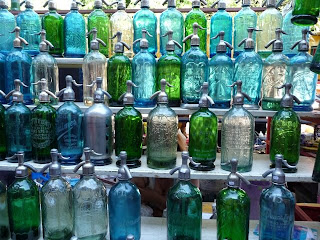
This picture doesn't begin to do the scenery justice. Yes, those are indeed the Andes rising up directly behind the vineyards. The closer you get to the mountains the better the quality of grapes, according to Tomas Achaval and he's found himself some great land to grow incredible grapes.
Tomas
Tomas invited us down to the Uco Valley, an hour south of Mendoza, to see the vineyards where all the magic happens for his Nomade wines. This valley is compared by some to the Napa Valley of 30 years ago for the quality grapes and the quiet roads. The added incentive (as if we needed one) was the crew was grilling asado in the vineyard that day.
Salud and
Buen Provencho!
Gustavo, the jefe or vineyard foreman, cooked a massive amount of steak, ribs and chorizo over the bonfire. We all stood around the table and I learned how to cut the steak, ribs and chorizo with a big gaucho knife, using a piece of bread in my left hand as a plate. Eating with our hands, chatting and drinking malbec grown from this very vineyard made for a great picnic.
Here's me with the jefe (far left) and crew.
Tomas y yo
After lunch, we walked the new Las Mulas vineyard (named for the historic place close by where the army used to raise the mules so important for crossing the mountains) where Tomas grows merlot. To get there, we drove up dirt roads, walked across a meadow past a white horse grazing, picked wild yellow plums and drank water from the cold, cold streams. Absolutely heaven.
We then headed into the lab to taste wines from the barrel and do some blending with Tomas's enologist. After our siesta.


















